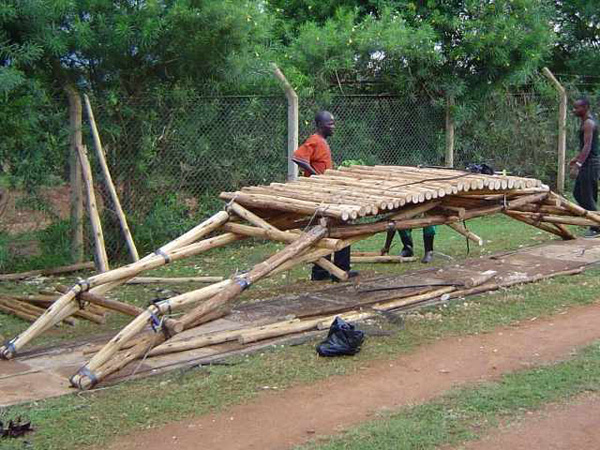
Cliff, a long-time reader and frequent contributor from NZ, sent this tip to me. The same basic building process could be used to make roof trusses and other structural components and buildings such as free standing domes.
Source: The Rainbow Bridge

Cliff, a long-time reader and frequent contributor from NZ, sent this tip to me. The same basic building process could be used to make roof trusses and other structural components and buildings such as free standing domes.
Source: The Rainbow Bridge
This technique is more than 500 years old and was developed by Leonardo da Vinci:
http://www.rlt.com/20101
Owen thanks for the answers and insight.
Thinking about it maybe you just continue a diagonal pole from the top of the pole to to the ground to transfer the force. A kind of a buttress. I live in a seismic area so I want to be sure it won’t come down on me.
See other comment about outward thrust. Also, you could build a ceiling to help reduce lateral thrust and join exterior walls to interior shear walls. Hire an engineer for sure in seismic areas.
Owen
If you used this technique for a truss and extended the end of the truss beyond the wall to give you an eve or overhang, what would be a good way to anchor the end? As I see it the force would be more out than down. Would buried vertical poles or logs be strong enough to hold the outward force?
Just at a quick glance, it looks like the special connectors they use minimize outward thrust. Most of the force would be transferred downward through the wall, so this type of truss could be used on most any wall. Attach with sturdy hurricane ties.